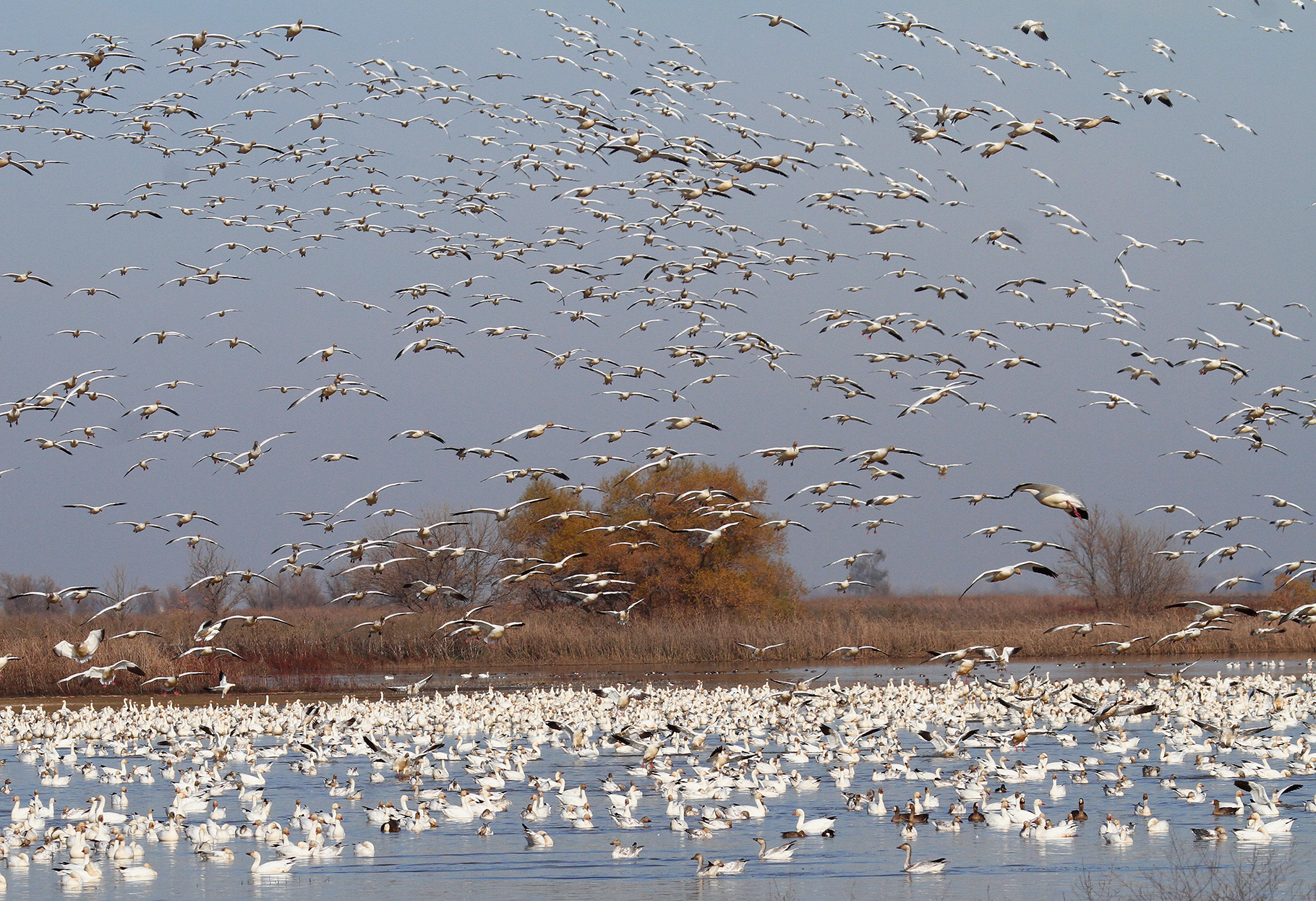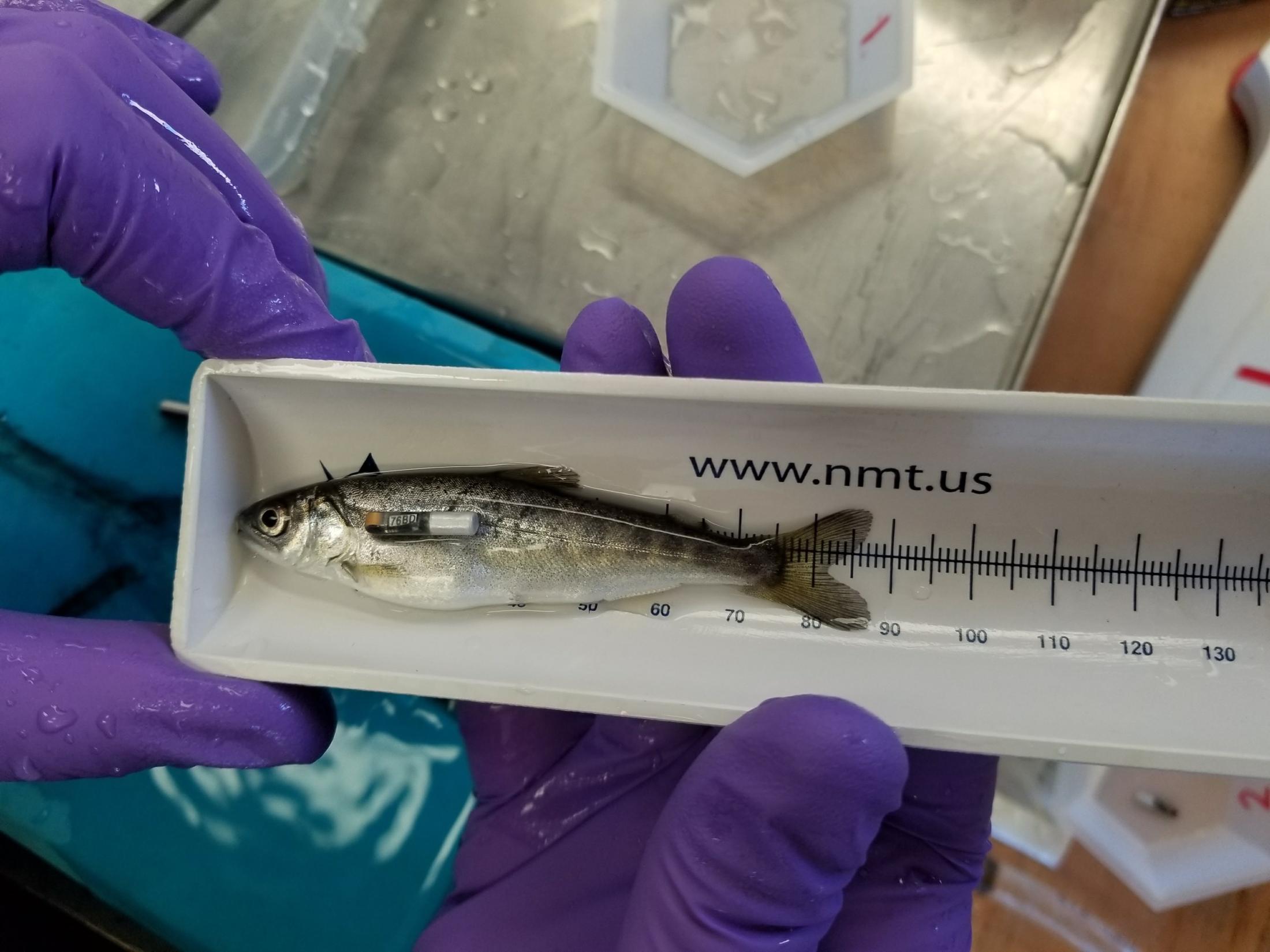A Message From the Dean - October 2018
Our research sheds light on nature’s migrations
One of nature’s most fascinating spectacles is currently underway in California: the annual migration of millions of ducks, geese, swans, cranes and other migratory waterfowl through the Pacific Flyway. The destination for a great many of these birds is the Central Valley of California. Here they seek out food and shelter for the winter before they head back north to Canada and Alaska to breed, nest and repeat the cycle.
Developing a better understanding of migrations is critically important. Our shifting climate is altering the timing of resource availability and appropriate habitat conditions, such as when wetlands are wet. We need a fuller understanding of how migration patterns are changing. The ecological effects of migrating waterfowl departing and arriving too early or too late have impacts on breeding success, survival and disease management. To make matters even more complex, some waterfowl species such as mallards and wood ducks nest in California, and meeting their breeding requirements requires clever solutions to accommodate human demands for land and water throughout the state.
Spring is arriving earlier, especially the farther north you go. Professor Eric Post, a polar ecologist in our Department of Wildlife, Fish and Conservation Biology, has verified observations circulating in the scientific community and in popular reports for years. The Arctic is experiencing a more rapid onset of spring than at lower latitudes. Telltale signs include changes in the timing of birds migrating, flowers blooming, amphibians calling and the emergence of leaves. The impacts to migratory birds are a particular concern because the availability of plants and insects to eat may be affected.

We have strong programs on migratory birds. Professor John Eadie, holder of the Raveling Endowed Waterfowl Chair, has expanded research over the years into the habitat needs of ducks and geese. This kind of research is crucial to provide the tools needed to manage migratory and resident waterfowl in a changing world. Eadie also is training students who will become the next generation of waterfowl and wetland biologists. The Raveling Chair has become a nationwide model to other universities establishing similar programs in waterfowl biology, and has been made possible by the generosity of private donors who share our interests.
While ducks and geese are probably the first species that come to mind when thinking about birds migrating long distances, there is a “hidden migration” under study by our scientists working at the UC Davis Museum of Wildlife and Fish Biology. Museum Curator Andy Engilis is conducting surveys of a spectrum of birds inhabiting the Central Valley. Wintertime avian residents include a number of songbirds such as Lincoln’s sparrow and varied thrush, who migrate here from Alaska and northern Canada. This research is critically important for the riparian restoration initiatives taking place on private and public wetlands in California.

A migration of a different sort occurs in the rivers and streams of the Central Valley—that of our salmon and steelhead. Chinook salmon, which mature in the ocean and return to inland waters to spawn, were once highly abundant and widely distributed throughout the valley. Today, Chinook salmon runs are a fraction of what they once were, mainly from loss of spawning habitat. Professor Andrew Rypel, holder of the California Trout and Peter B. Moyle Endowed Chair in Coldwater Fishes, and departmental colleague Professor Nann Fangue have been working with federal and state agencies to help bring back a sustainable run of spring-run Chinook in the San Joaquin River. With advanced water quality tools, acoustic monitoring techniques, and innovative laboratory experiments, Rypel, Fangue and fellow researchers are generating the science necessary to inform restoration and adaptive management efforts in what some consider one of the most endangered rivers in North America.
We are committed to deepening our understanding of the rhythms of nature so that society has the tools and the talent to be good stewards of the environment. As we reflect upon the change of seasons, we are reminded that migrations connect all of us to our natural settings in vital ways.